We do another overnight outside passage and explore the beautiful city of Charleston, SC.
November 4 to November 10, 2023
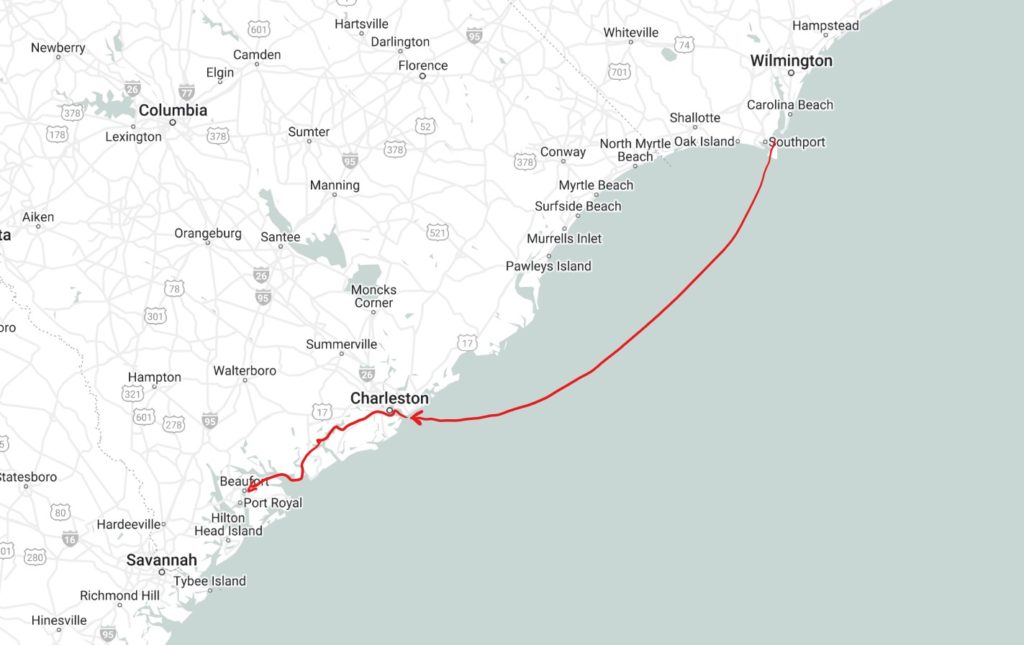
We spent Saturday morning looking at the weather to come up with a game plan. The ICW is wonderful as a safe haven from lousy weather, has stretches that are wild and beautiful and others that run alongside fun and interesting towns and cities. However, we were growing tired of the ICW, whose winding, shallow, protected water made sailing difficult and required constant negotiation with other boats. Did we already say this?…likely. We decided on another 24 hour outside passage. In order to avoid the 2+ meter waves that were forecasted, we decided to stay put at our current anchorage and leave the following morning (Sunday around 10h) for Charleston, SC. Our bail out plan, if needed, would be at Little River Inlet.
The rest of the day was spent tidying up and watching the pelicans. Shane got some engine work done, including a hot wire installation (in case we needed a Hail Mary – thanks Brian for the tutelage!) and replacing wires and the trailer hitch on the engine panel. We got caught up with all the kids via video, and Auckland, our grandson, even sat through part of a story and jammed on his Ukulele while Shane played guitar.
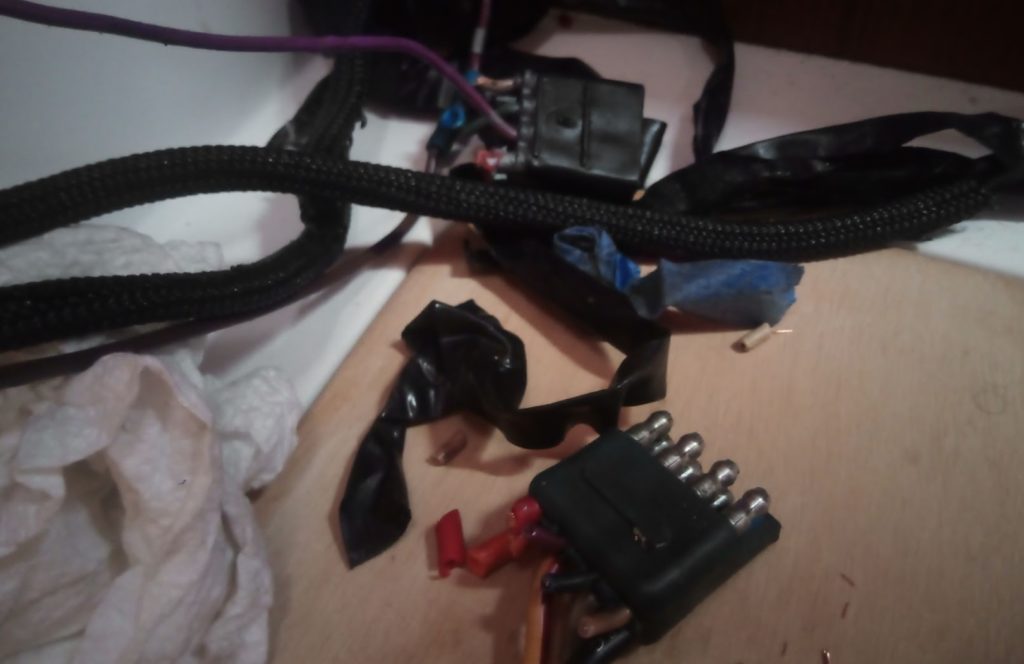
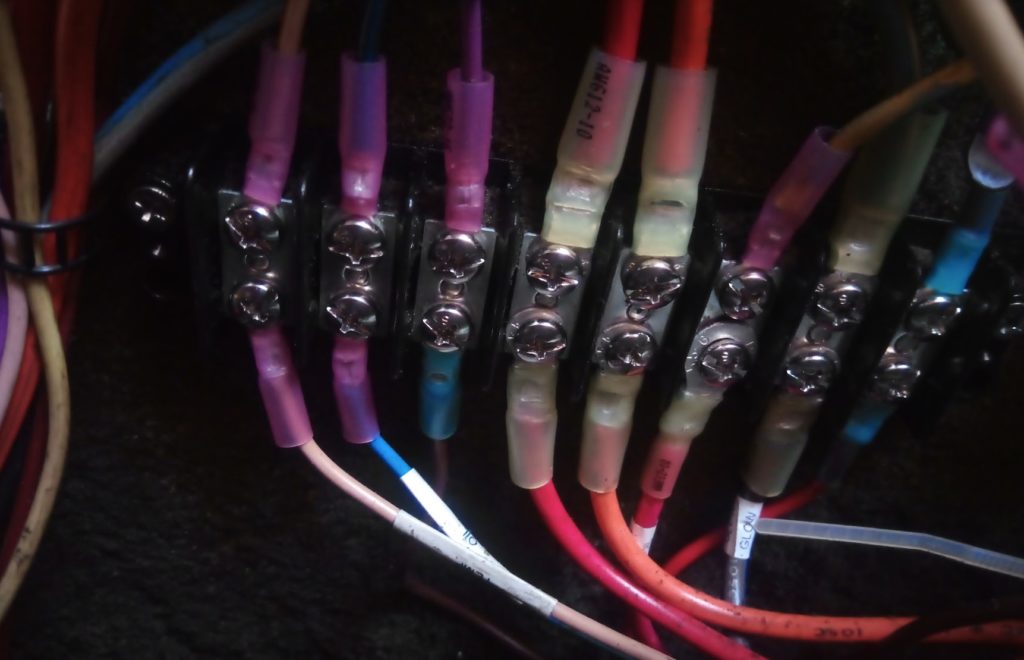
Sunday morning, we were up early prepping to leave. Oil and coolant added. Tea and coffee made. Jacklines on. Shane premedicated. Weather checked. Route plotted. Foulies donned. Anchor up. See’ya pelican buddies. We forgot about the time change and ended up leaving an hour early – woops.
As we moved offshore, we saw monarchs and heard the moaning of the Cape Fear River whistle buoy in the gentle swell. We spotted several dolphins, but none came to play at our bow. The water was a deep turquoise (another welcome change from the ICW’s normally brown water). We tried sailing, but only accomplished 2 knots which would have had us arriving in Charleston after dark, so we motor-sailed. As we progressed the water’s colour morphed again into a rich teal, then a gorgeous Mediterranean blue. The day was uneventful until 1hr, during my watch, when I noticed lightening in the distance. I watched for a while, then called Shane up to have a look. Initially, we had no cell service and the forecast available on VHF wasn’t detailed enough to know if we’d be sailing into this storm, so we watched and waited nervously. We eventually crossed into an area with some cell service, were able get some satellite images and were quite relieved the storm was 75 miles off shore and not coming closer. (We were only 25 miles off shore.) Phew. After that, we kicked back in the cockpit, watching lightening light up the clouds and sea with its large orange and pink strikes and marveling at mother nature’s beauty and power, Beauty of course is in the eye of the beholder, and these beholders were 50 miles from the action. The rest of the sail was uneventful and we managed to get good sleep when off-watch, arriving in Charleston early Monday morning around 9:30h, well rested and ready to explore.
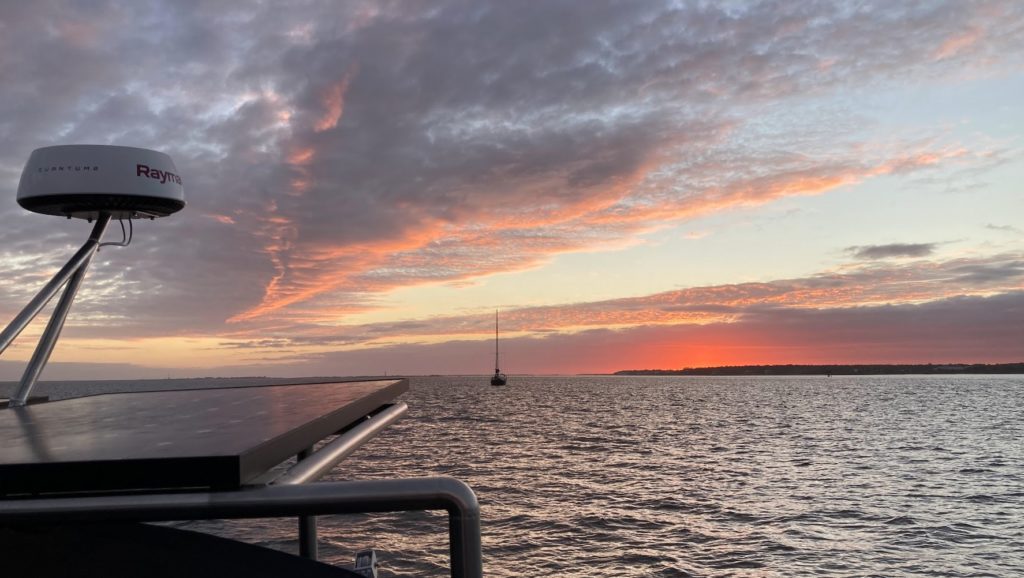
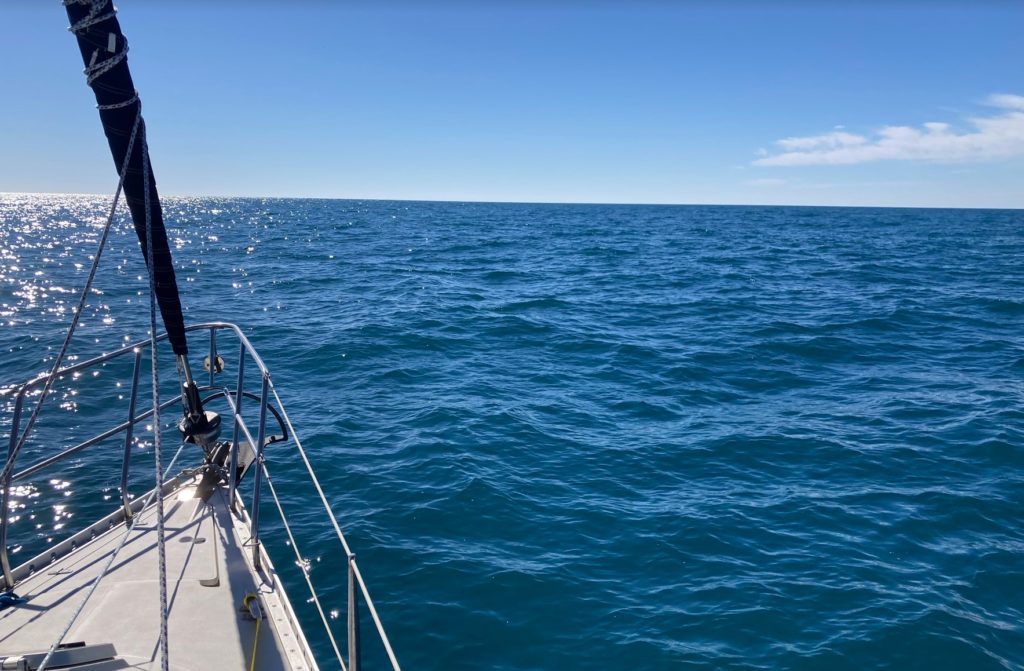
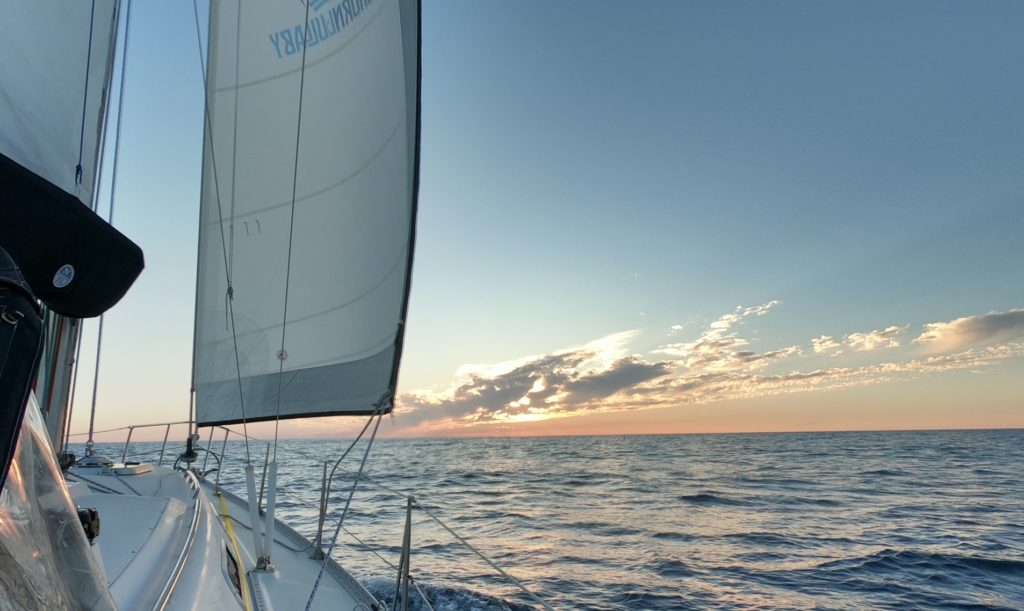
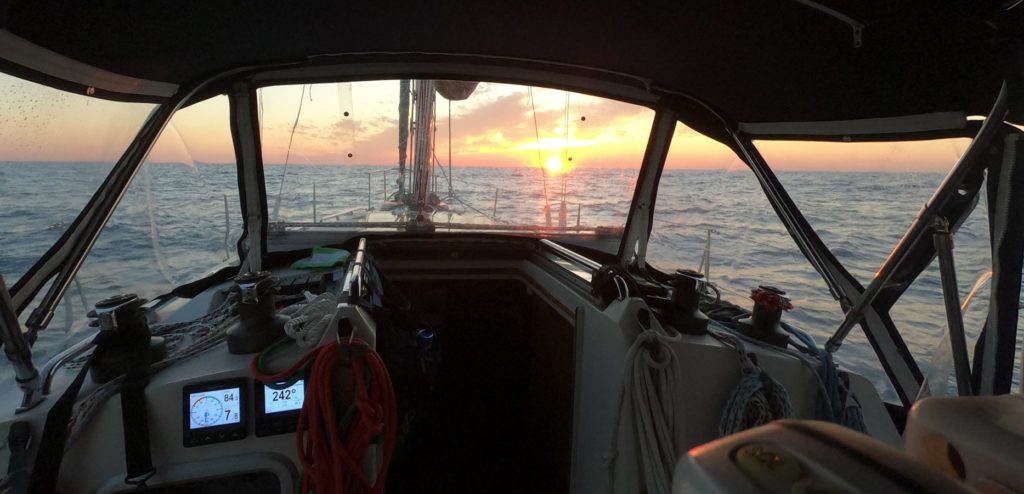
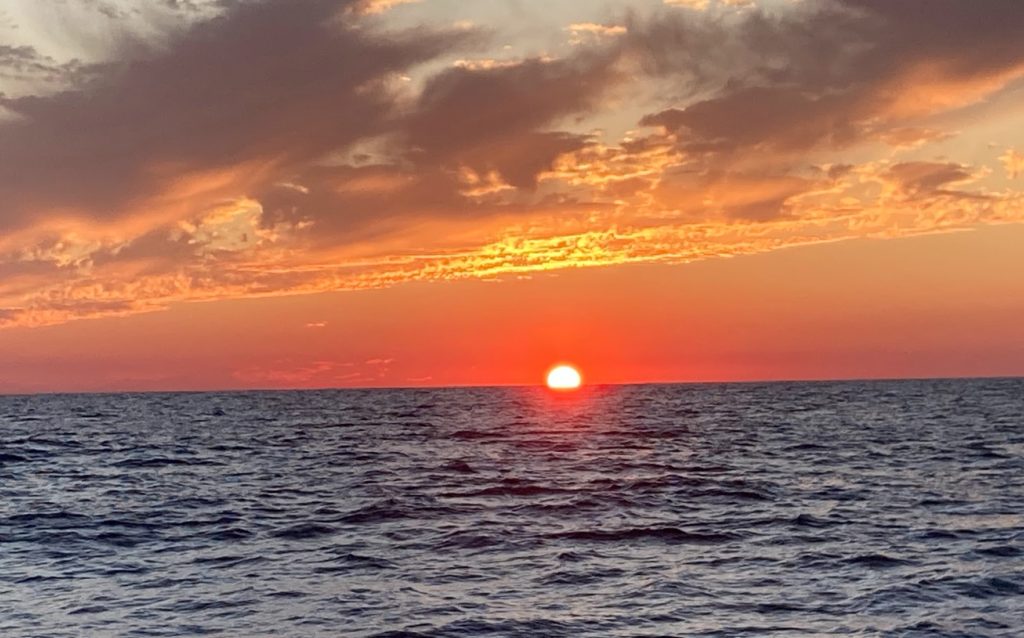
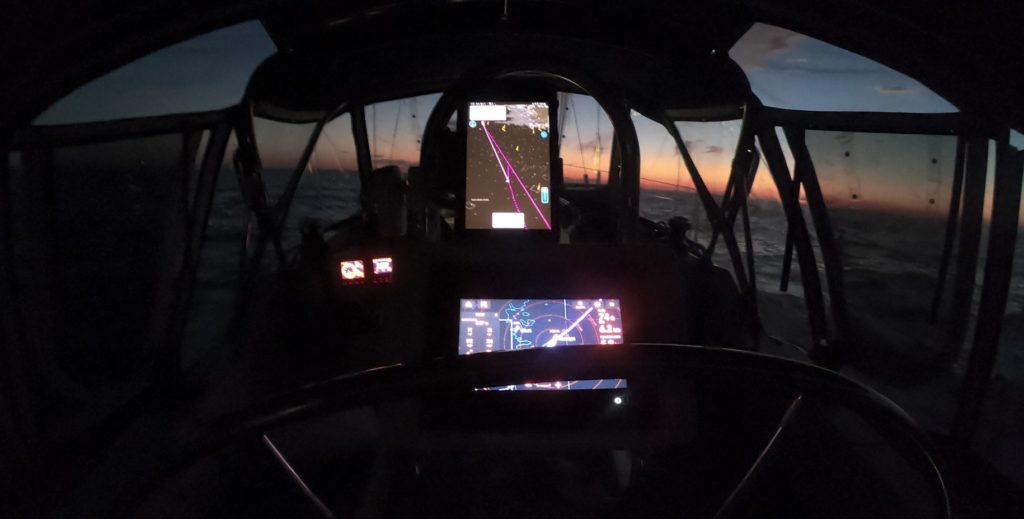
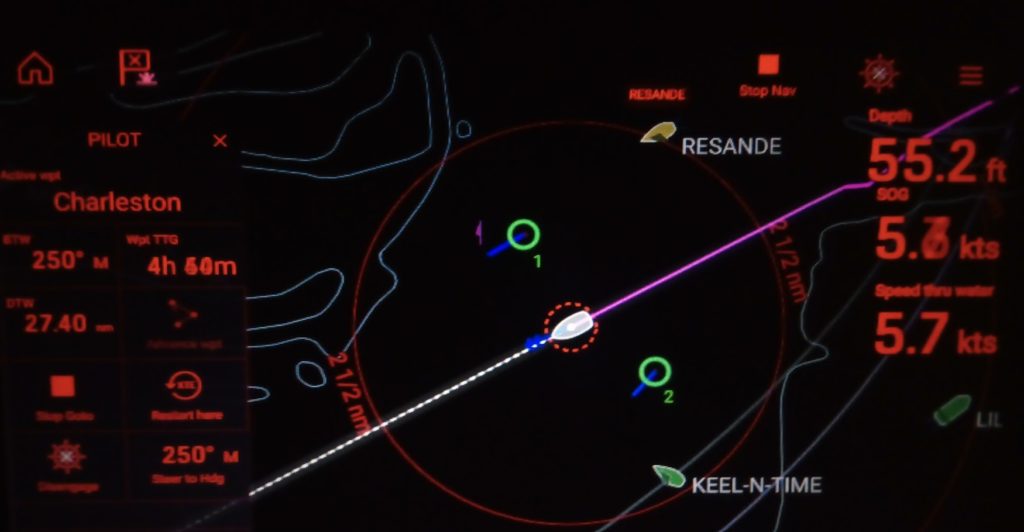
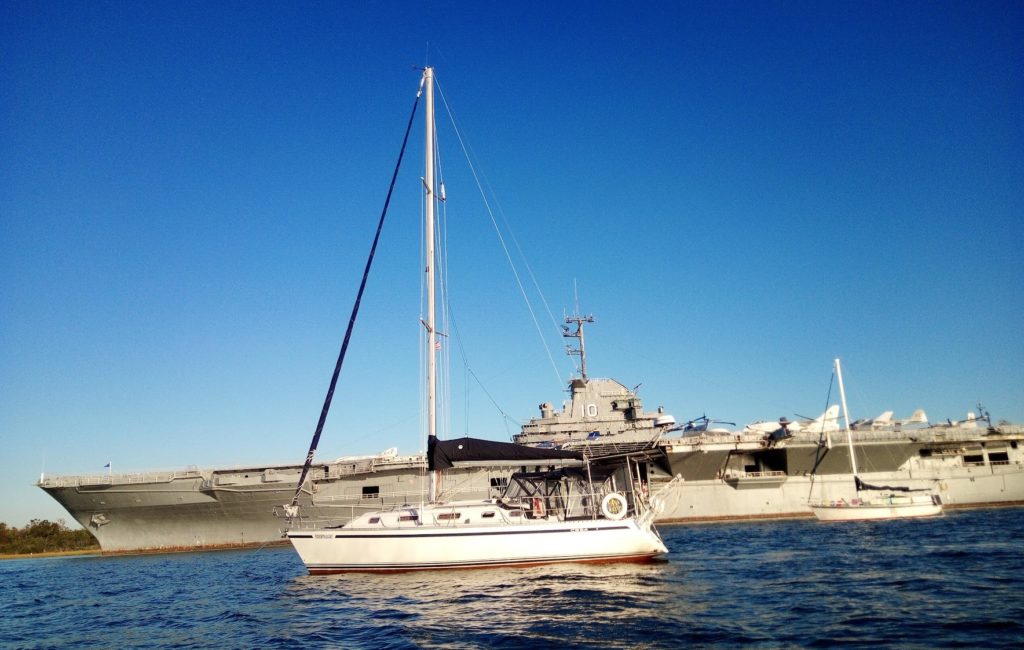
We anchored by a large aircraft carrier and ate breakfast, while watching dolphins play about its bow. We had a brief catch up with Dave and Joan of Rising Sun, Richard and Jennifer of Dude and Regina and Dave of Vitae. We took the dinghy across the harbour and wondered aimlessly. For supper, we had fish tacos on Vitae – king fish that their friends had caught while underway, and then shared.
Our wake up call on Tuesday was courtesy of the shrimp crackling outside our haul. We had heard them before, but never this loud. (Shrimp cracking sounds like a bowl of Rice Krispies just doused with milk.) Tuesday was again spent exploring Charleston’s waterfront, perusing its stores and sampling its microbreweries. While out and about, we bumped into iBOAT and Freja. The cruising world is a small one! We ended the night playing board games and eating leftovers.
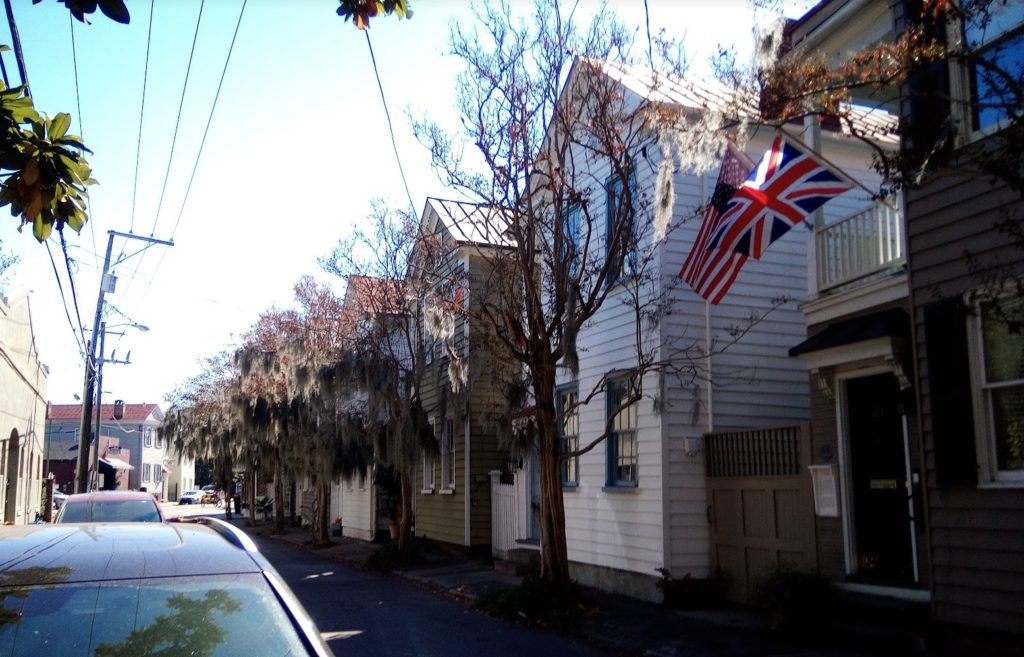
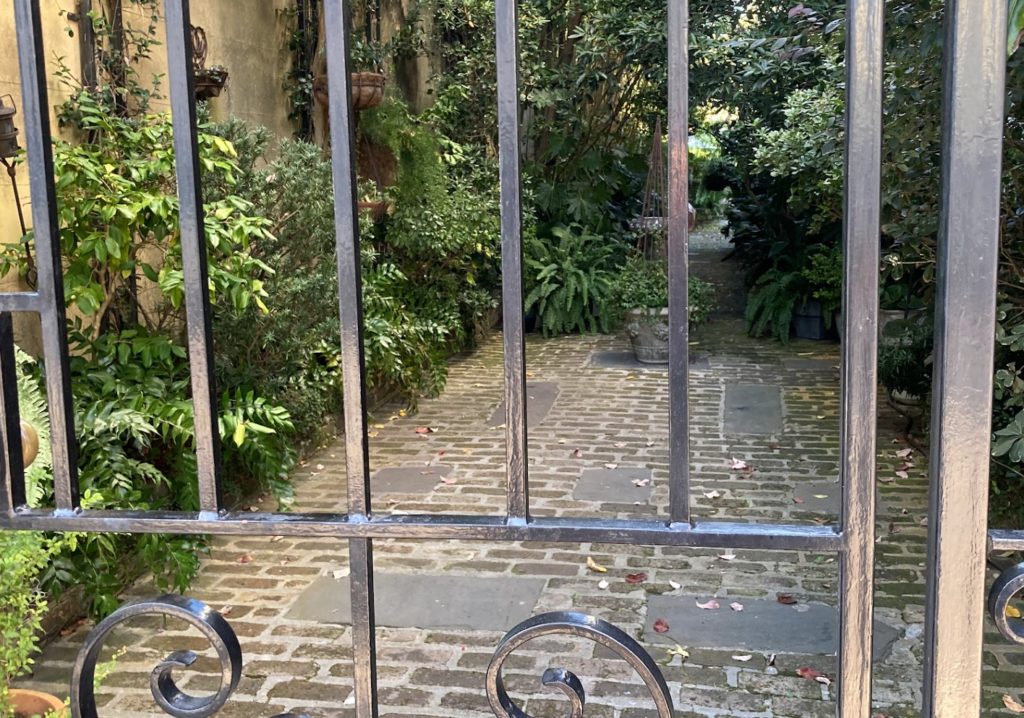
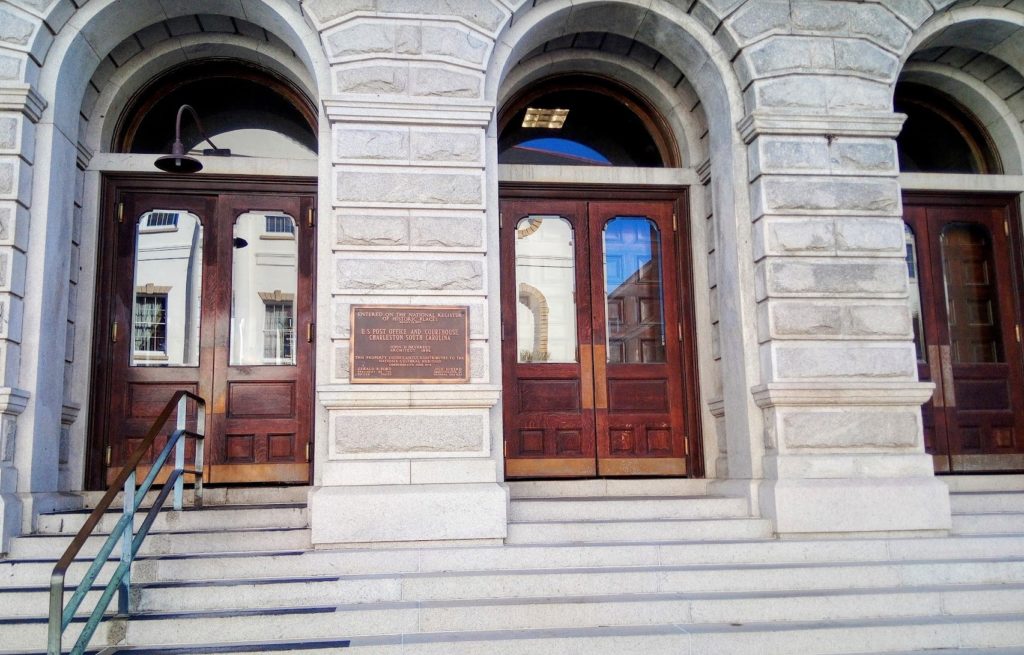
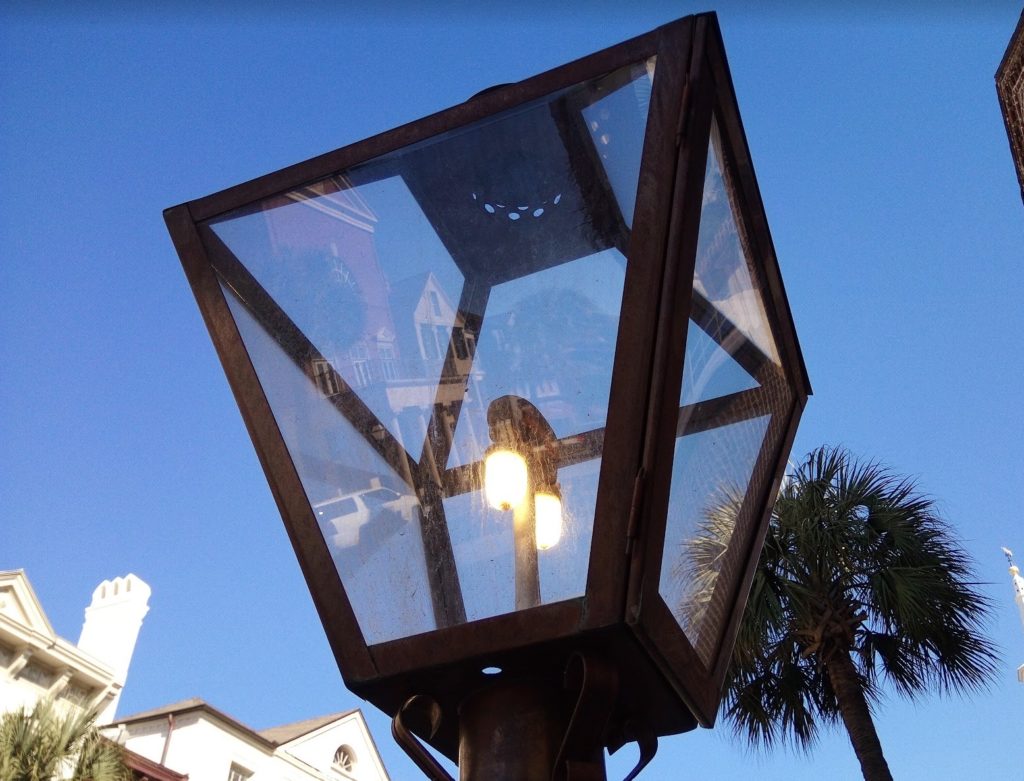
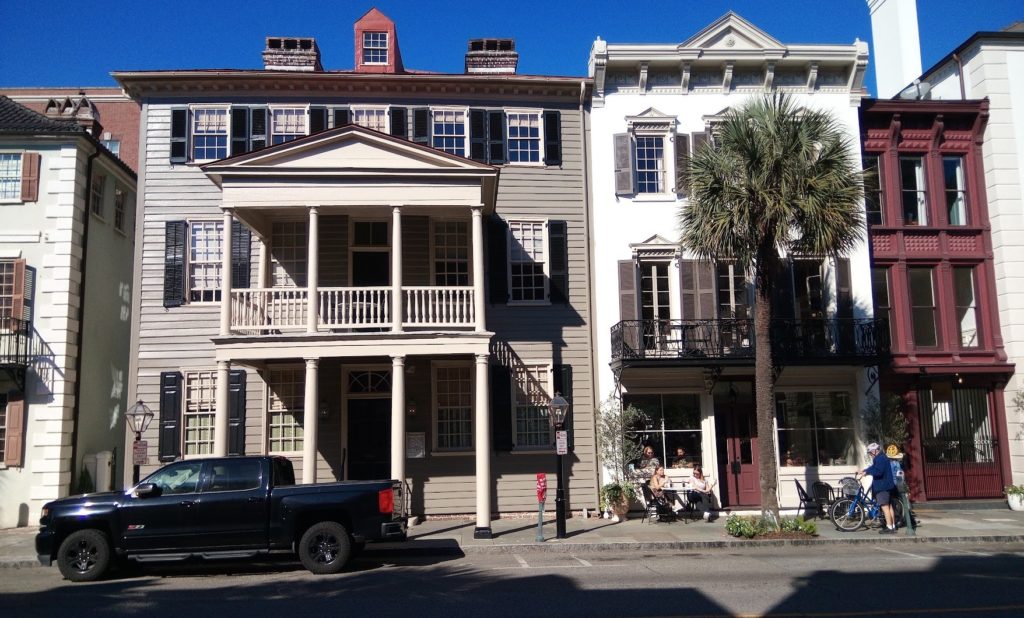
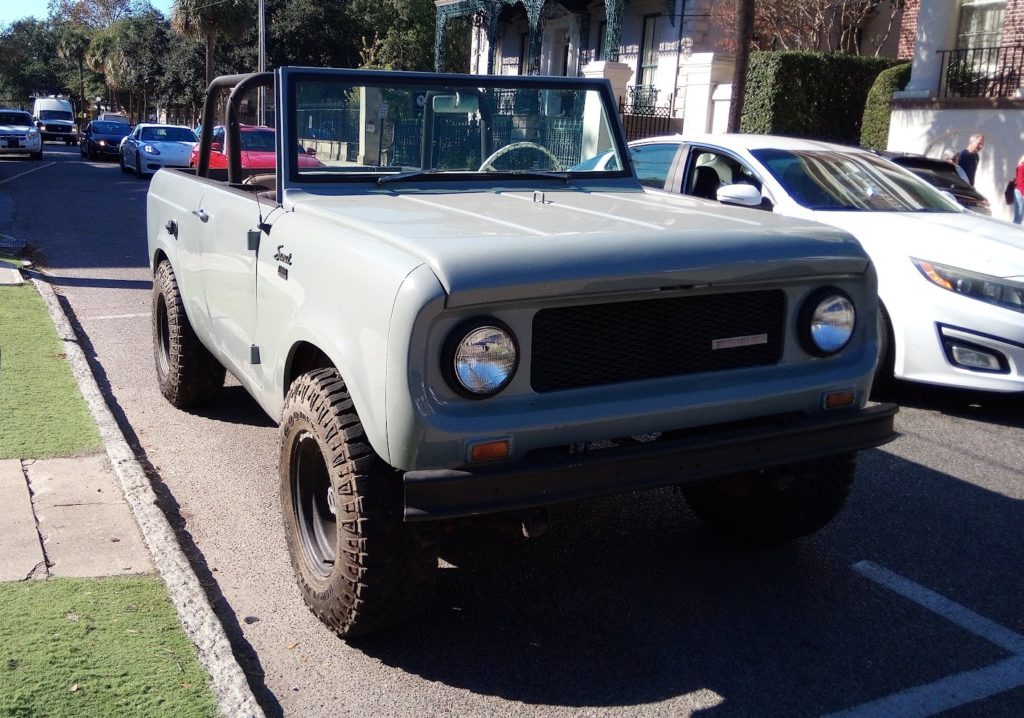
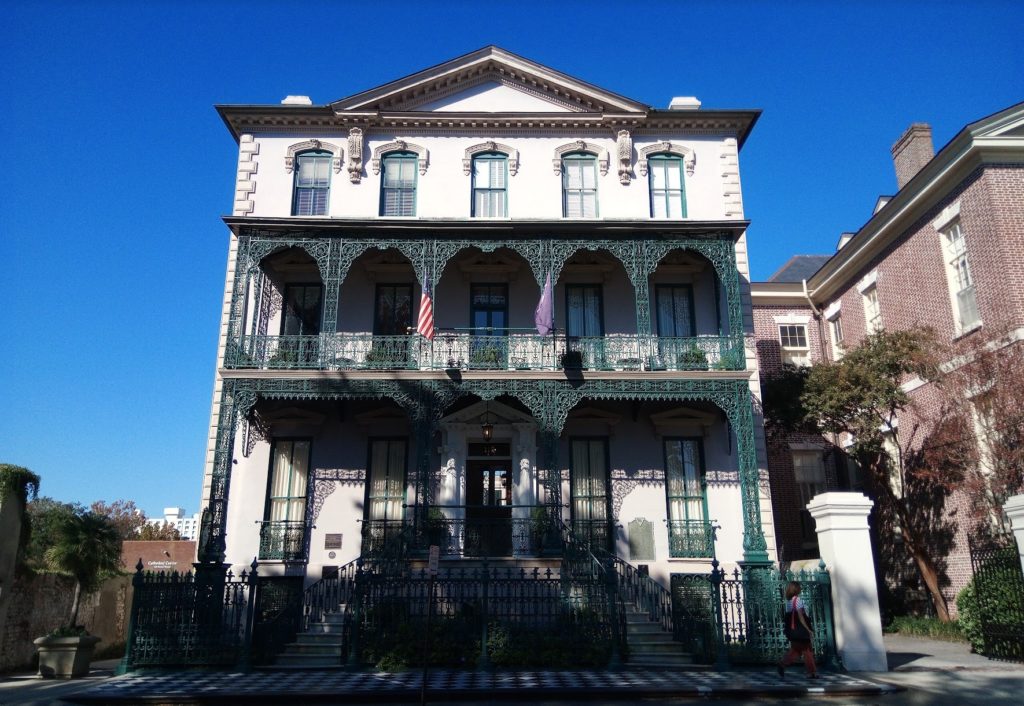
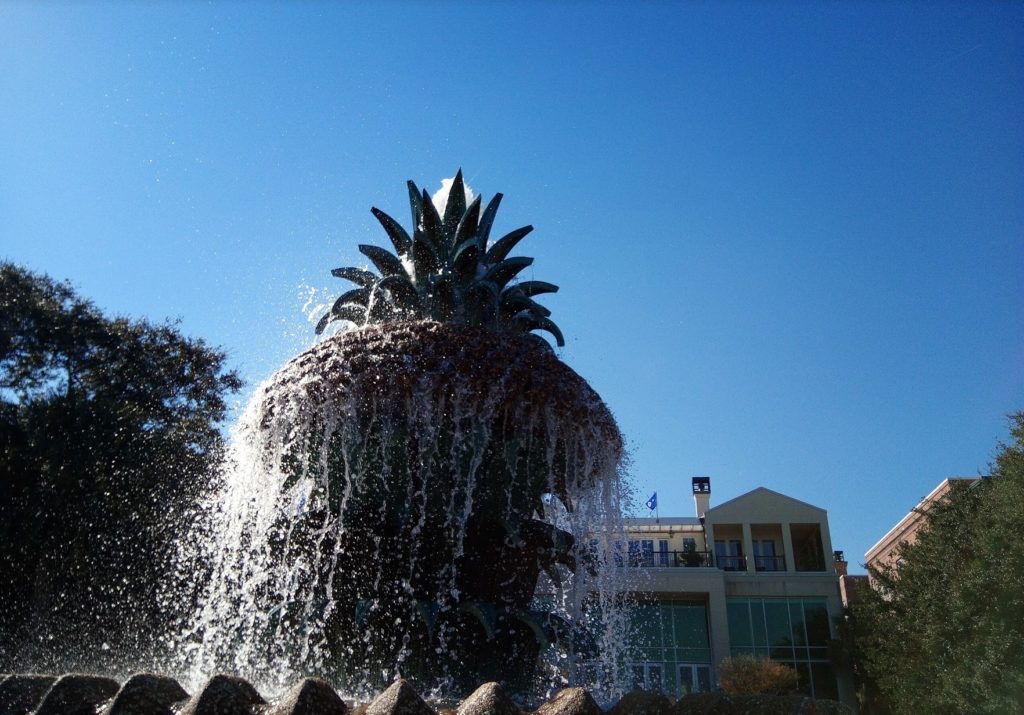
The upcoming forecast was not favorable for another outside passage, so we returned to the ICW on Wednesday to continue South. Our departure had to be timed with an hourly bridge opening, tides and current. The upcoming Elliott Cut was tricky, we had been warned, so we decided on a short travel day in exchange for safety, leaving the Charleston anchorage in the early afternoon. We misjudged how long it would take to get the bridge, getting there far too early, needing to spin and idle until the14:30h bridge opening. Aside from feeling a definite pull in Elliott Cut, it posed no issues and its water depth was not a concern. We anchored for the night in Buzzard’s Roost.
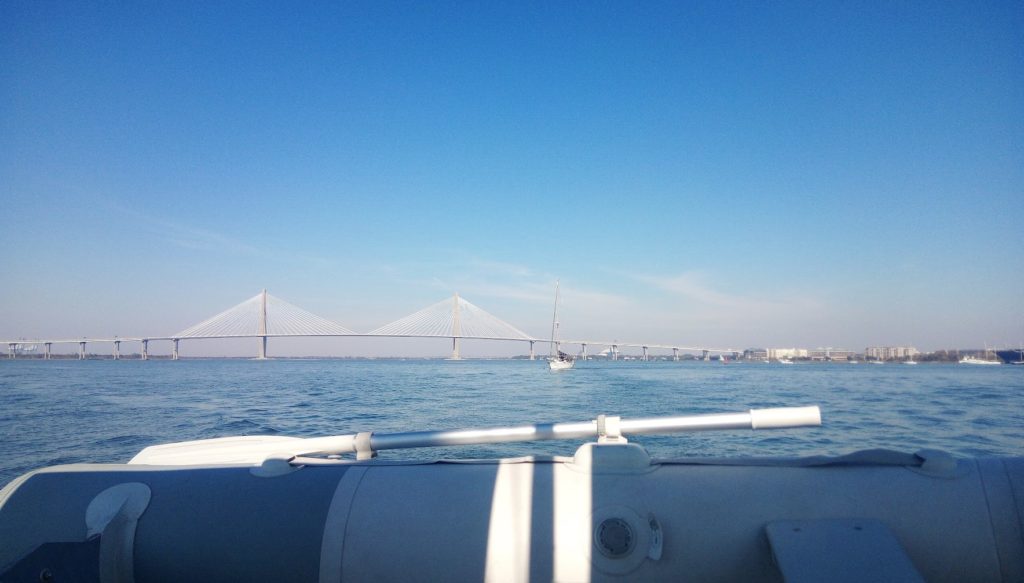
Thursday, we had the anchor up and were motoring by 9h with a plan to travel about 30NM and be anchored once again before dark. It was an uneventful day but we did notice we were regularly seeing palm trees mixed among the other trees along the shore. We anchored at Racoon Island for the night with the goal to get to Beaufort, SC tomorrow. (There is a Beaufort, NC and a Beaufort, SC, spelled the same, but pronounced differently).
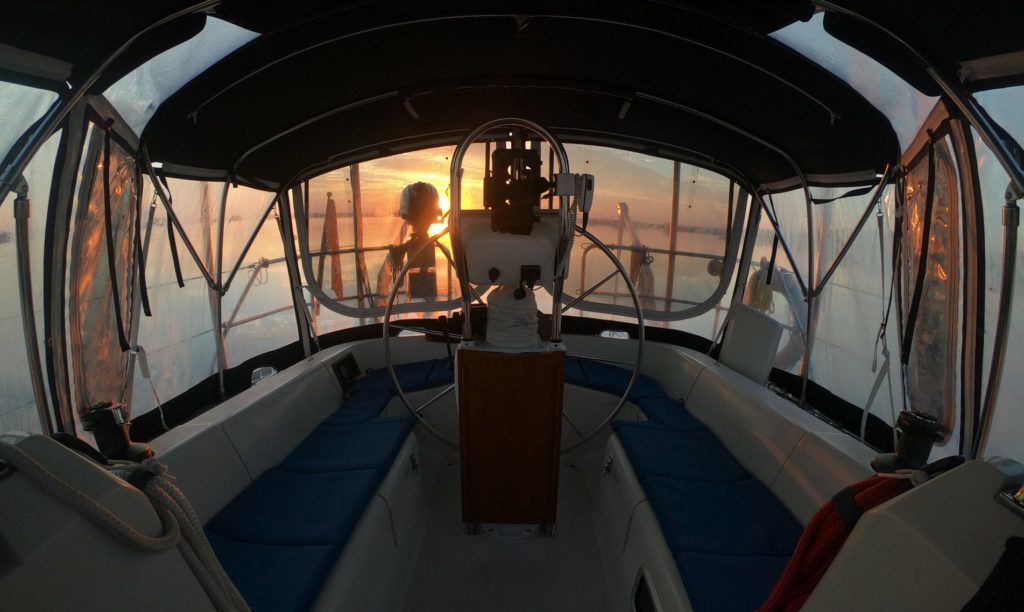
We continued along the ICW on Friday morning. The shores along this stretch of the ICW (along the Ashepoo and Coosaw Rivers) are lined with tall and beautiful tri-coloured grass. We passed fishing boats pulling in their catch and several crab boats, who were throwing off cast aways to nearby pelicans. The pelicans were floating at a mellow, respectable distance and gave only a cool nod upon swallowing, that seem to say “thanks man.” I spent a good part of the day downstairs oiling the cabin teak, which I hadn’t had time to tackle for a couple of years.
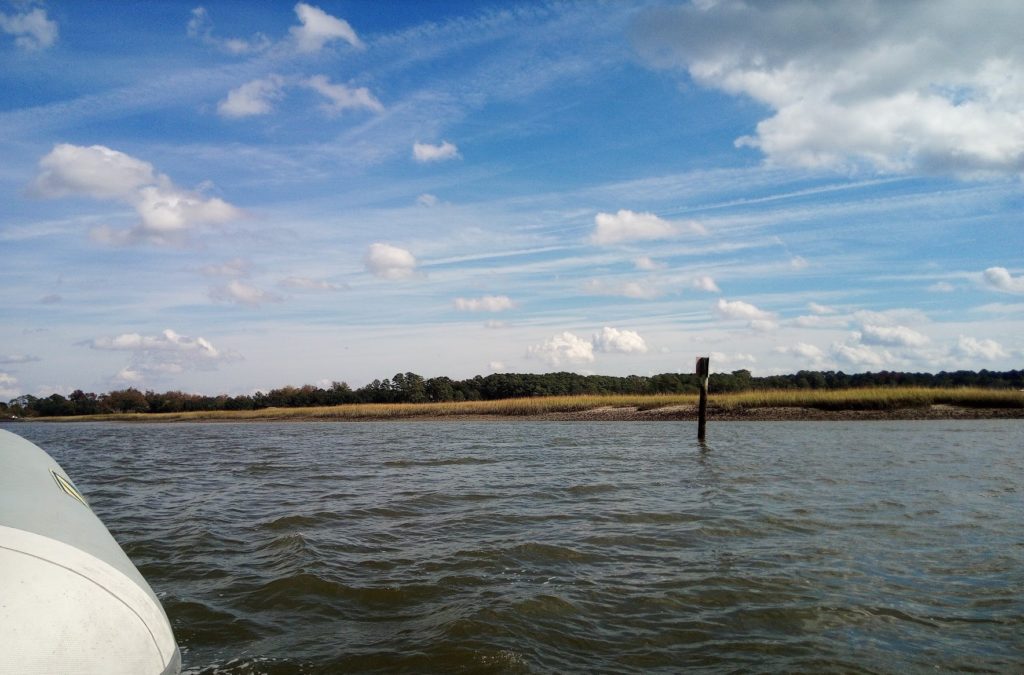

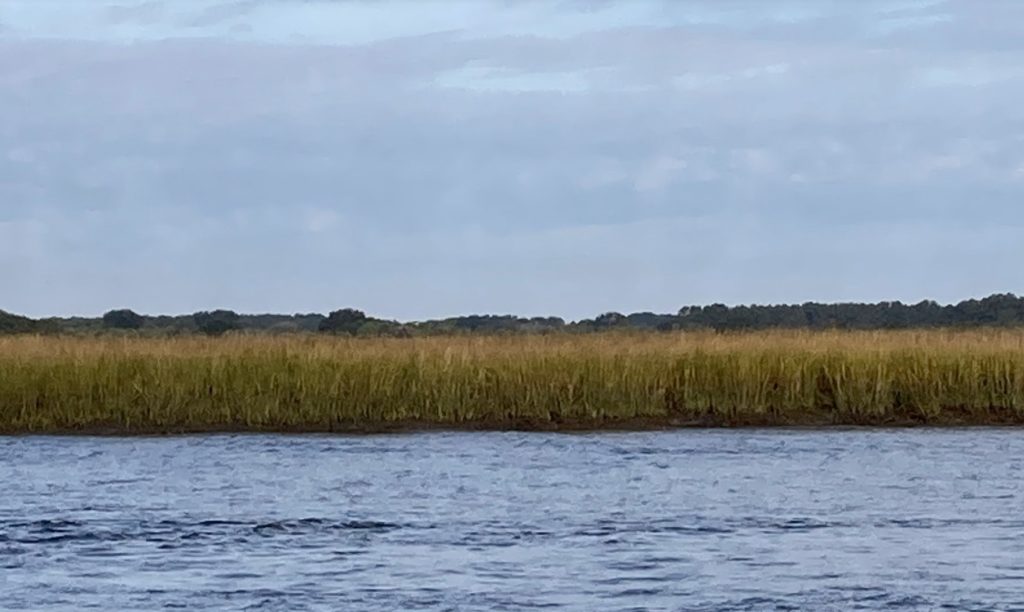
The motor to Beaufort should have been uneventful but wasn’t. I was in the aft cabin finishing up the lower part of the door when I heard our engine die. We were in a narrow part of the ICW. I ran upstairs, and Shane scrambled to figure out what the problem was. He suspected a fuel supply issue. We threw down our anchor to stop from running aground. We ended up with our stern dangling in the channel and having to hail passing boats with warnings and sheepish apologies, while also calling Sea Tow for assistance. About 20 minutes later, while on hold for the Sea Tow captain and while Shane was still sleuthing, he popped his head up into the cockpit and asked if I had shut off the engine battery switch. Me: “Definitely not.” Him: “Were you in the aft cabin?” Me: “Yep – just cleaning.” Him: “Well you must have knocked it off. He flipped the switch and got the motor running. I pulled the anchor to make sure we had propulsion before cancelling Sea Tow. We did – Foggy was moving. I issued my formal apologies to the Captains of Foggy and Sea Tow, and on we went. Once we were anchored in Beaufort, I went back downstairs to finish the oiling job, and sure enough when I crouched down, my butt hit the battery switch.
We were ready to get off the boat, walk and decompress as soon as we arrived in Beaufort. I bought a book at McIntosh Book Store, a cute store that sells collectors and new books. I bought one by local author, Patti Callahan, called Surviving Savannah, about the sinking of the Pulaski, which maybe wasn’t the best choice for this adventure. It is a great read though. We then visited two art galleries, before rounding out our cultural experience at a couple of bars, he he. We had the best muscles we’ve ever had at a Mexican restaurant called La Nopalera Restaurant. In fact they were so good, the broth should have been La Nopalera’s soup of the day. While we were waiting for said muscles, we met a lovely fellow from Nigeria, who organizes safaris and was in town for a wedding. His food arrived before ours, and he didn’t hesitate to push it towards us to share. We enjoyed his company and hearing about his work, country and family. The night ended under a gazebo with a local drumming circle; Shane can play some mean congas!
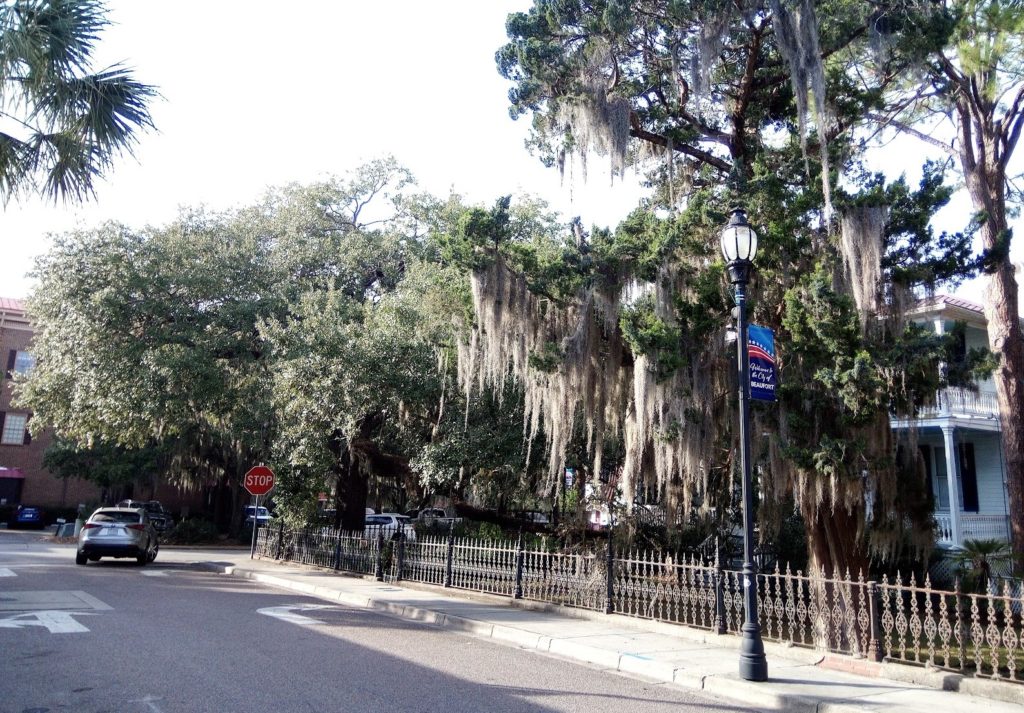
Fun fact: We heard a three different explanations about what causes the popping sound around our boat hull (shrimp, fish eating from the hull and fish swimming into the hull). But, the correct answer appears to be pistol/snapping shrimp. Their claws close at a speed high enough to form a vapour bubble which creates a popping sound when it collapses.

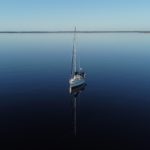
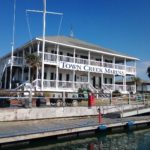
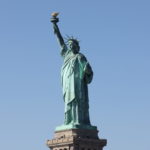
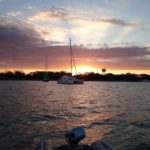
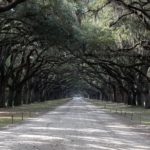
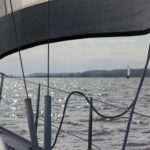
January 13, 2024 at 10:57 pm
Love reading these! I suspect that you ate mussels, which technically might also be muscles😂
January 14, 2024 at 1:46 pm
Lori and Shane,
I so enjoy reading your posts. Lori, you have quite a way with words, love reading your adventures!
Glad you two are having the adventure of a lifetime. Happy sailings.🥰